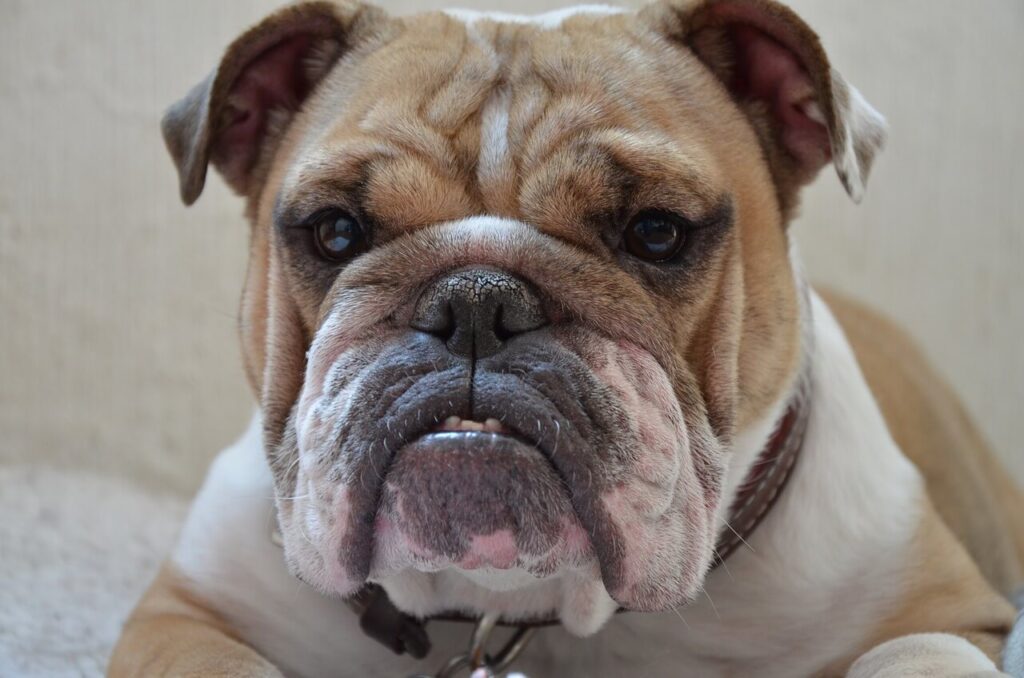As an old saying goes, “prevention is better than cure”. This is noticeable with regard to obesity, a problem that affects humans as well as animals.
Thus, investing in prevention is the best option. However, if you already have a fat dog, know that it is essential to help it lose weight.
In this post, we are going to talk about canine obesity, as well as its causes and risks. In addition, we will show you how you can identify if your dog is overweight. Good reading!

Contents
WHAT A FAT DOG
Canine obesity is the accumulation of body fat. It is important to understand that your dog may simply appear to be a little chubby, due to the amount of hair he has, for example, or he may be really obese.
In the second case, it is essential to identify and treat the problem, since obesity is a worrying disease that poses many risks to the life and health of the animal.
Each case of obesity has its differences, so it is important to take your dog to the vet to see the best form of treatment.
WHAT CAUSES OVERWEIGHT IN DOGS?
There are many causes of canine obesity and one of them is your pet’s poor diet. Consuming food in excess and fleeing the canine eating pattern, for example, is one of the most frequent causes of weight gain.
That way, just like humans, animals should also have a balanced diet and an exercise routine to expend their energy .
Dogs raised in apartments with reduced space are more likely to develop obesity, as these environments facilitate the animal’s sedentary lifestyle.
Another factor that can cause obesity is neutering , because it tends to make the dog more relaxed and sedentary, which decreases the canine metabolism. Therefore, after castration, it is important that the animal has a good diet and a physical exercise routine.
Remembering that it is not castration that causes obesity in the dog, but the life he will have after castration.
In the winter season, the dog can also develop physical inactivity. As such, they tend to be quieter, so be on the lookout for this behavior.
It is also important to note that the absence of affection combined with loneliness and problems such as stress, depression and anxiety can cause eating disorders that, consequently, lead to obesity.
THE RISK OF THE FAT DOG
As with humans, animals can also develop risks with obesity, for example:
- diseases such as diabetes and hypertension;
- joint, heart and bone problems;
- accumulation of fat in the liver;
- endocrinological diseases;
- higher chances of cancer;
- among others.
It’s important to keep an eye out, as these diseases tend to lower your puppy’s quality and life expectancy.
In this way, it is important that the tutor knows how to recognize canine obesity and seeks to treat it before the animal has complications and acquires other health problems.
HOW TO IDENTIFY IF YOUR DOG IS OVERWEIGHT
It is not possible to know exactly how many kilograms each dog should have, as this varies according to the breed and the size of the animal. There are, however, some tables that show the ideal weight for certain breeds, which can help you identify your little friend’s overweight.
In addition, by observing some factors, it is possible to understand whether he is fat or thin.
TOUCH
Place your dog on top of a flat surface with all paws resting on it. Then lightly run your fingers and hands over the dog’s ribs and hip.
If you can feel the bones very easily, your dog is underweight. On the other hand, if you need to exert a little more force to feel the bones, this is a sign that your dog is overweight.
OBSERVATION
Another way to tell if your dog is thin or overweight is by looking at it from above.
If you can see all the bones in the ribs and hips, and you can see that the thighs and arms don’t have much muscle, it means he’s underweight.
If you can visualize almost all the bones it is a sign of being underweight.
The dog that has a more rounded body and no curves can be overweight, so pay attention to that appearance.
Finally, your dog is at ideal weight if you can see a curve before the hips, feel the ribs by lightly running your fingers over them, and realize that the pet has a significant amount of body mass.
TIPS TO PREVENT CANINE OBESITY
Excess weight in dogs can be prevented with some basic care, such as:
- balanced diet;
- active life with the practice of activities that exercise the body and mind;
- snacks only on certain occasions;
- set time for feeding;
- frequent veterinary appointments;
With these tips, your pet will have a healthy and well-being life.
HOW TO HELP YOUR DOG LOSE WEIGHT
You can help your pet to decrease the concentration of body fat with the assistance of veterinary professionals.
To discover the best treatment for a fat dog, the ideal is to take him to a clinic. In this way, professionals can analyze the cause of obesity and indicate the best way for him to reach normal weight.
There are treatments with medication, food, specific exercise routine (such as running and swimming), among other procedures.

























